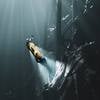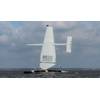DNV Introduce Seismic Vessel Notation
DNV has developed a class notation for seismic vessels in consultation with key industry players, WesternGeco, PGS and Fugro-Geoteam.
The need to have enhanced redundancy and proper deck arrangements to ensure continuous operation without loss of speed is the backbone of these new technical requirements.
Seismic vessels contain high end computerized technology to find resources below the seabed, and represent a key element in the value chain leading to future offshore field developments. Any interruptions in the ships forward movement can complicate the seismic data processing, and continuous operations with focus to avoid any downtime of key functions are hence of utmost importance.
With expensive seismic streamer equipment mobilized at sea, sudden loss of service speed may lead to severe consequences as damage to cables impairing the whole seismic vessel operation.
The new notation focuses on increased availability of the vessels during critical phases of the seismic operations. As well as vessel operators, DNV has consulted seismic handling and high pressure equipment suppliers to ensure that all current and future industry challenges are comprehensively dealt with.
The maintenance of propulsive power is a key issue. The class notation has therefore taken the DNV concept for redundant propulsion one step further so that any failure on board will not lead to loss of more than 50 per cent forward trust. This is sufficient to maintain a minimum speed of a few knots and will protect any high cost air guns and streamers deployed.
Seismic vessels typically operate for many months continuously without seeking harbour. The class notation requires a deck arrangement that facilitates side by side transfer for crew and resupply from a seismic support vessel.
Beyond this, the class notation also sets a requirement for the bridge arrangement to ensure good view to the streamers and any workboats that are close by during normal operation. High pressure systems are also addressed in the class notation to ensure that deck operations can be carried out safely by the crew.
















 February 2024
February 2024



